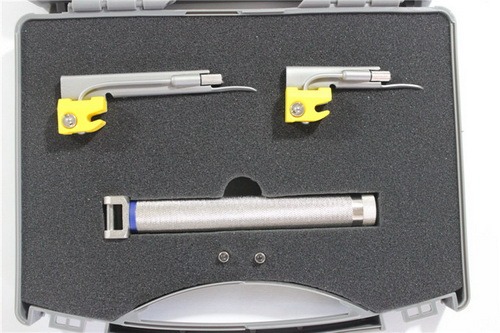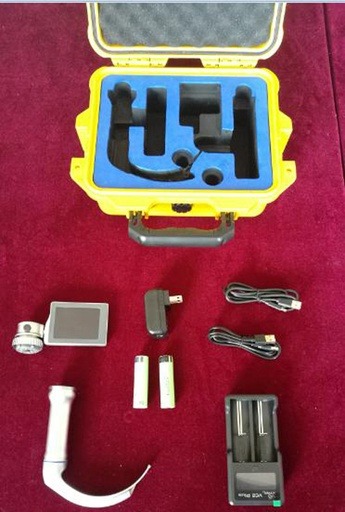When it comes to managing pediatric airways, precision and expertise are paramount. A pediatric laryngoscope is more than a medical tool—it’s a life-saving device designed to navigate the unique challenges of smaller, delicate anatomy. In this guide, we’ll explore the nuances of pediatric laryngoscopes, their types, advancements, and best practices for their use. Whether you're a medical professional or simply curious, this article demystifies the vital role of pediatric laryngoscopes in modern healthcare.
1. What Is a Pediatric Laryngoscope?
A pediatric laryngoscope is a specialized device used to visualize a child’s larynx during medical procedures such as intubation. Unlike adult laryngoscopes, pediatric versions are tailored to the smaller and more delicate airways of children.
Quick Facts:
- Average Size: Pediatric blades range from 0 to 3 sizes, depending on the patient’s age and size.
- Primary Use: Ensures safe and accurate placement of a breathing tube.
- Global Stats: Pediatric laryngoscopy is performed over 5 million times annually in emergency and surgical settings worldwide.
2. Pediatric vs. Adult Laryngoscopes
Understanding the differences between pediatric and adult laryngoscopes can be critical:
| Feature | Pediatric Laryngoscope | Adult Laryngoscope |
|---|---|---|
| Blade Size | Smaller, more curved | Larger, less curved |
| Design Focus | Minimizing airway trauma | Maximizing visibility |
| Common Blade Types | Miller, Macintosh | Macintosh, Flexiblade |
The adaptability of pediatric laryngoscopes ensures minimal harm to soft tissues, a key requirement for younger patients.
See also: Understanding Fiber Laryngoscopes: Uses, Benefits, and Procedure
3. Types of Pediatric Laryngoscopes
Modern pediatric laryngoscopes come in a variety of styles.
Direct Laryngoscopes
- Traditional design requiring a straight line of sight.
- Common types: Miller blades (straight) and Macintosh blades (curved).
Indirect Laryngoscopes
- Use mirrors or cameras to visualize the airway.
- Popular for difficult airways.
4. Choosing the Right Laryngoscope Size
Selecting the appropriate size is critical to avoid complications like airway trauma.
Tip: Always refer to weight and anatomy over age for precision.
5. Overcoming Challenges in Pediatric Laryngoscopy
Performing laryngoscopy on pediatric patients poses unique challenges, such as:
- Smaller airways: Increasing the risk of obstructions.
- Higher larynx position: Making visualization difficult.
Have questions? We offer free consultation.
Expert Strategies:
- Pre-procedure Assessment: Evaluate for anatomical anomalies.
- Use of Video Laryngoscopes: Enhance accuracy and reduce trauma.
- Simulation Training: Boost clinician confidence and skill.
6. Innovations in Pediatric Laryngoscopy
Advancements in technology have revolutionized pediatric laryngoscopy:
- Video Laryngoscopes: Allow real-time viewing on screens.
- Single-Use Devices: Reduce infection risks.
- Smart AI Systems: Assist in identifying airway complications.
According to a 2022 study published in The Journal of Pediatric Surgery, the use of video laryngoscopes increases first-attempt intubation success rates by 35%.
7. Sterilization and Maintenance
Proper cleaning and maintenance are vital to ensure patient safety and device longevity.
Best Practices:
- Use enzymatic solutions for cleaning.
- Ensure complete drying to prevent bacterial growth.
- Follow manufacturer guidelines for sterilization cycles.
See also:
Portable Autoclaves: The Ultimate Guide to Efficient Sterilization Anywhere
8. Training and Competency
Operating pediatric laryngoscopes requires specialized training.
- Training Duration: Typically 6–12 months of supervised practice.
- Simulation Tools: Realistic models for mastering techniques.
- Certifications: Offered by organizations like the American Board of Pediatrics.
Data Point: Over 85% of airway complications in pediatric cases are preventable with proper training.
9. Risks and Complications
While generally safe, risks include:
- Airway Trauma: From improper blade size or technique.
- Hypoxia: From prolonged intubation attempts.
Risk Mitigation:
- Always use age-appropriate equipment.
- Monitor oxygen levels continuously.
10. Conclusion: Elevating Pediatric Airway Management
Pediatric laryngoscopes are indispensable in modern medicine, ensuring safe and effective airway management for children. With continued advancements, improved training, and a focus on minimizing risks, the future of pediatric airway management looks brighter than ever.
Key Takeaways for Healthcare Professionals:
- Always select the correct size laryngoscope based on weight and anatomy.
- Stay updated on technological advancements like video laryngoscopy.
- Prioritize training and continuous education to ensure high competency.
→Click here to learn more about our Laryngoscope
or

